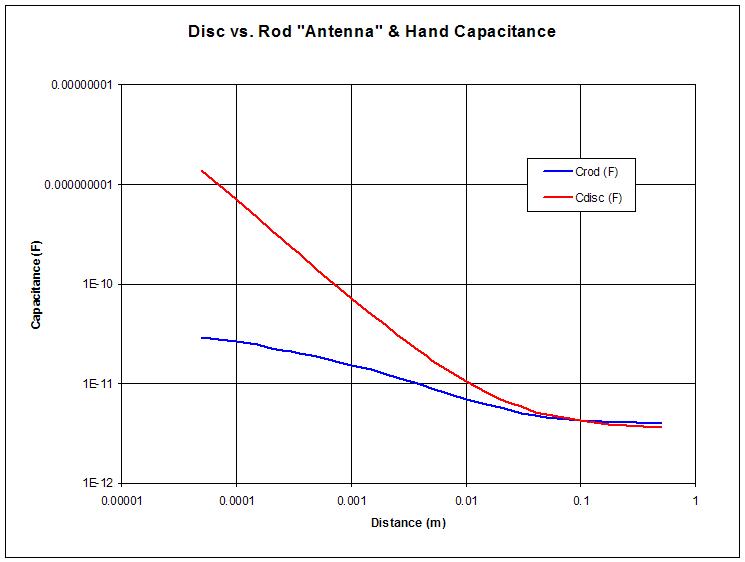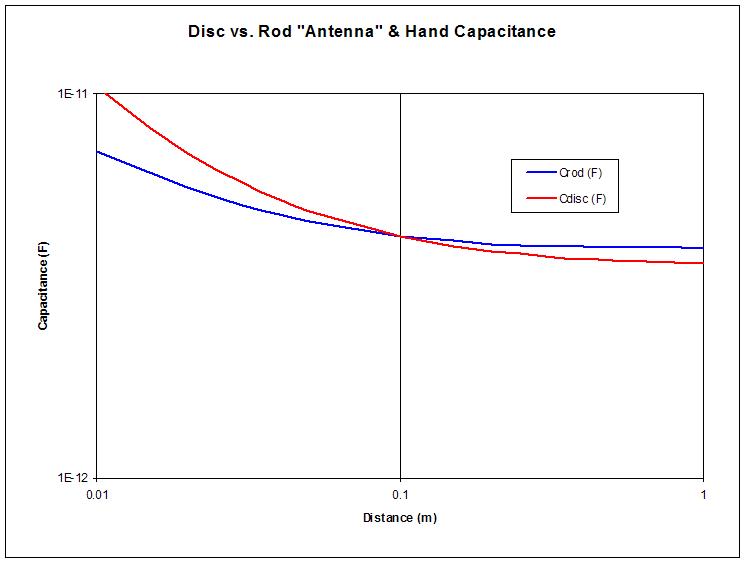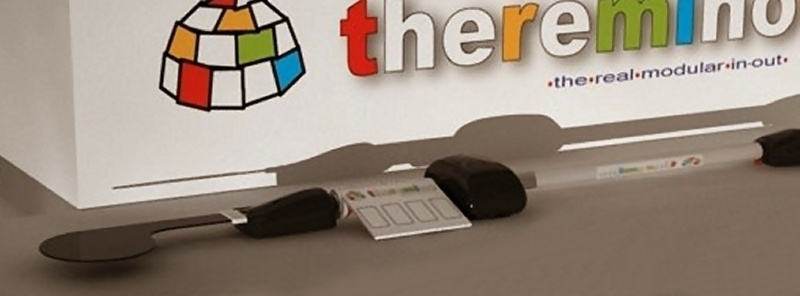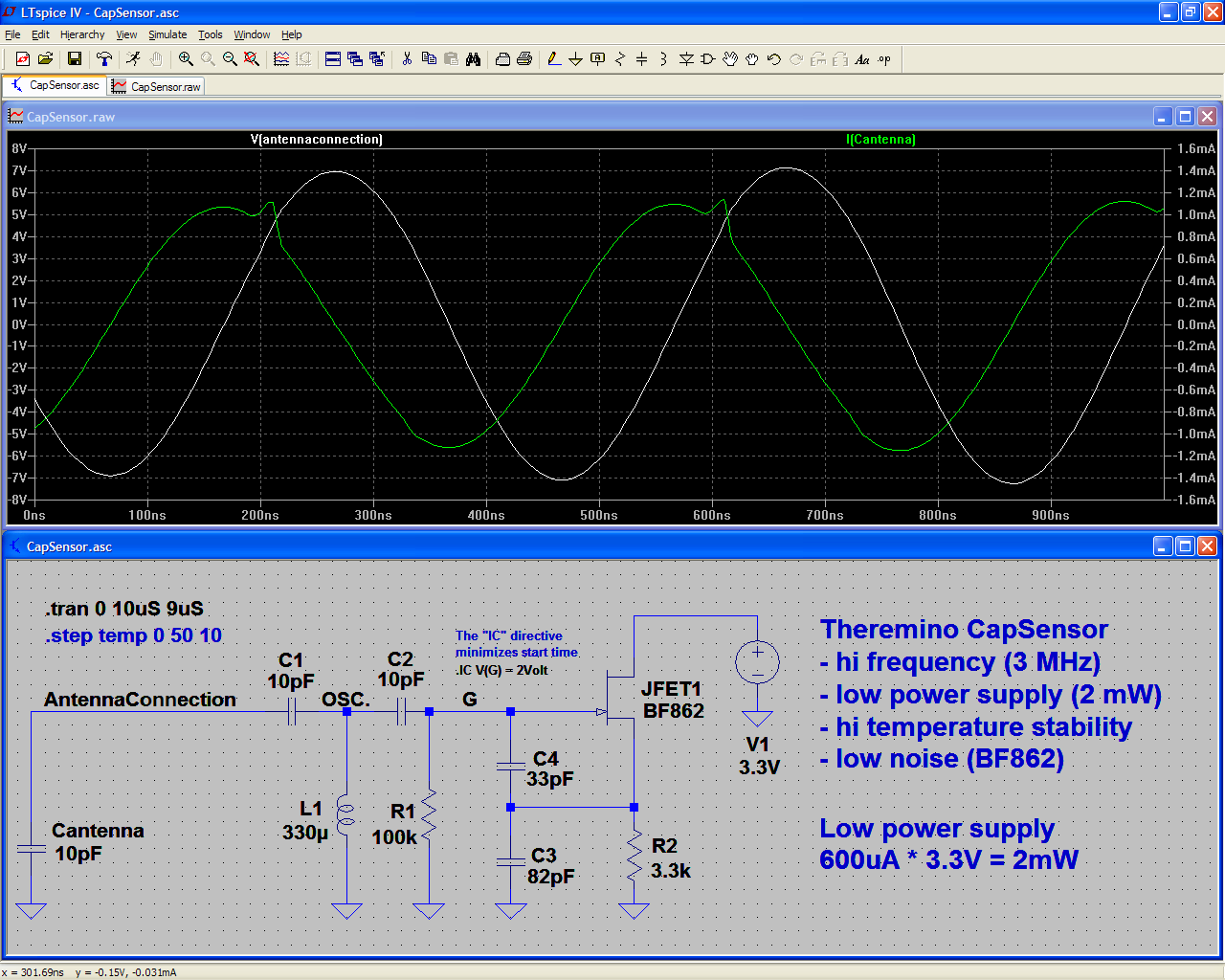ROD vs DISC Theremin "Antennas"
At livio's prodding, I spend a few days looking for good papers on the capacitance of discs. A good one is "The circular disk parallel plate capacitor" by G. T. Carlson and B. L. Illman, American Journal of Physics, 1994. In it they solve exactly for parallel plate disc capacitance and present some tabular results.
The capacitance between two closely spaced circular disks of equal radius is (this only holds for very close spacing):
Cgeom = E0 * A / d
Capacitance of a single isolated disk in space (to ground) is:
Csingle = 8 * E0 * r
Capacitance between two disks an infinite distance apart is half this:
Cdouble = 4 * E0 * r
The last equation makes sense because each disc "sees" the universe through it own capacitor, so these two capacitors in series at the measurement point will be half the value due to the way series capacitor values add.
As discussed in other papers, one can use these as boundary conditions for near and far capacitance.
The simple combination of Cgeom + Cdouble = C2 surprisingly gives a reasonably accurate result (<5% error) when compared to the exact tabulated capacitance.
By this line of reasoning, Cgeom + Csingle = C1 may give a reasonably accurate result of the capacitance of a single disc to ground when approached by a second grounded plate of equal radius? It would be nice to have real data for this, particularly how it related to a disk and a hand, and I may gather some at some point.
Anyway, I put the data in a spreadsheet and compared the single disk being approached by another grounded disk (the C1 equation above) to my rod antenna equation. Here is the result:

Rod is 250mm long by 10mm diameter. Disc is 100mm diameter.
Note that the axes are log-log, so the distance isn't linear. The area if interest for Theremin playing is arguably between 0.1m and 1m, and the disc does seem to have a bit of a sensitivity advantage here. The disc would be more directional as well.
This is preliminary, and based on my ad-hoc disc formula which may not be super accurate. But at this point I'm not entirely convinced that going with a disc pitch antenna is the best, particularly given the vertical rod geometry of virtually every Theremin to date. But I will make a disc antenna and try it out once I have a prototype up and running again.
The capacitance & change above (disc or rod) is really pitiful! Kind of hard to believe any Theremin can use that to precisely control pitch! The square root of it no less! This aspect of the Theremin constantly amazes me.
[EDIT] Here's a better view of the area of interest:

The disc does have a sensitivity advantage. I'm concerned that the player would find it difficult to carefully orient his/her hand vertically (as well as horizontally, which is required for the standard rod shape).




